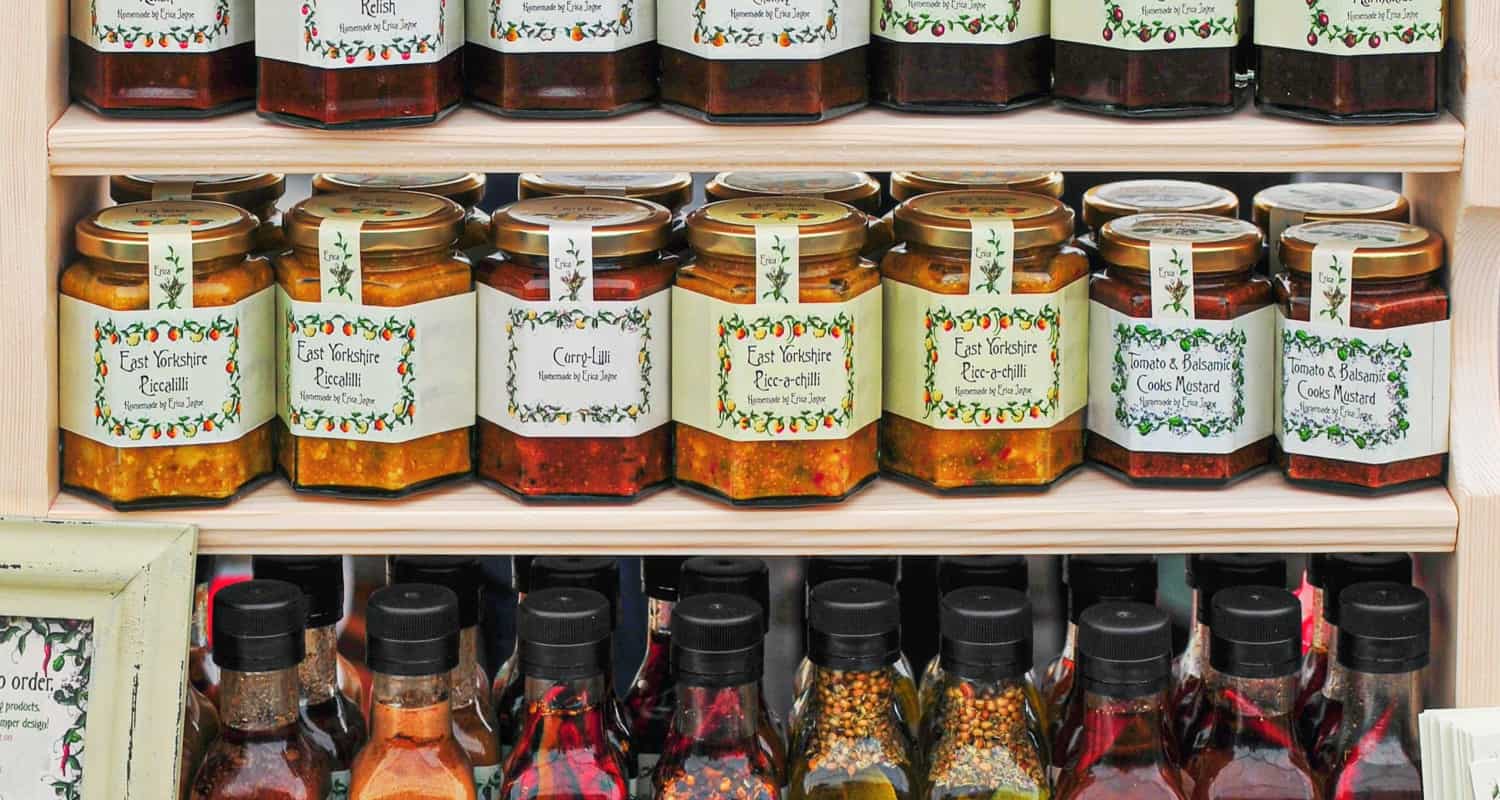We’re bombarded with countless daily food choices in today’s fast-paced world. Ever stood in the grocery aisle, paralyzed by the sheer number of “healthy” labels staring back at you? It’s a common dilemma. We all want to make wise nutrition decisions, but the overwhelming information can lead to decision fatigue.
What tools will help you make wise nutrition decisions? Tools like MyPlate, a clear understanding of food labels, in-store dietitians, and personalized nutrition counseling are pivotal in making informed and wise nutrition decisions.
But what if there was a way to cut through the noise? A toolkit, perhaps, that could guide you effortlessly through these choices, ensuring you’re not just eating but nourishing your body.
See Also: What is Nutrition Response Testing? A Comprehensive Guide
Contents
- 1 Understanding Food Labels
- 2 Avoiding Food Poisoning
- 3 Advice Directly from Grocery Stores
- 4 Benefits Beyond Food: Community Meals
- 5 Nutrition Counseling and Its Importance
- 6 Tools for Healthier Food Choices
- 7 FAQs
- 7.1 What is MyPlate, and how does it help in making healthier food choices?
- 7.2 How often are the Dietary Guidelines for Americans updated?
- 7.3 What are the benefits of understanding food labels?
- 7.4 How can I make healthier grain choices?
- 7.5 What role do registered dietitians play in nutrition counseling?
- 8 Conclusion
Understanding Food Labels
Each time you select a product from the grocery shelf, there’s a high probability you’re presented with a multitude of labels. “All natural”, “non-GMO”, and “USDA Organic” – they all scream for your attention. But what do they really mean? Moreover, as consumers become more informed, they’re also looking for labels indicating the presence of specific nutrients.
For instance, a phytochemical is found in plant-based foods, while a zoochemical is found in animal-based foods. Knowing these distinctions can further guide your food choices. The claim “calcium builds strong bones” is an example of a health claim. Such claims can provide insights into the benefits of the product, but it’s essential to verify their authenticity.
The Significance of Popular Labels
- “All Natural”: This sounds reassuring, doesn’t it? But here’s the catch: there’s no strict definition for what “all natural” means. It can often be a marketing gimmick. However, generally, it implies that the product doesn’t contain artificial ingredients or preservatives.
- “Non-GMO”: This label indicates that the product doesn’t contain genetically modified organisms. With the ongoing debate about the safety of GMO foods, many consumers find solace in this label.
- “USDA Organic”: Now, this one’s a heavyweight. Products with this label must meet stringent guidelines set by the USDA. It means the product is free from synthetic additives, pesticides, and genetically modified ingredients.
See Also: What is Basic Nutrition? A Comprehensive Introduction
Marketing Ploys vs. Genuine Labels
Distinguishing between genuine labels and marketing ploys is crucial. Though labels such as “USDA Organic” undergo regulation and possess significance, phrases like “all natural” may carry more ambiguity. It’s essential to do a bit of homework. Read beyond the front label, delve into the ingredients list, and be an informed consumer. Remember, not everything that glitters is gold. Sometimes, it’s just clever marketing.
In the maze of food labels, being equipped with knowledge is your best tool. It empowers you to make choices that align with your values and health goals. And in a world where information is power, understanding these labels is your superpower.
Avoiding Food Poisoning
Imagine biting into a delicious sandwich, only to find yourself feeling sick hours later. Food poisoning is not just an inconvenience; it’s a health hazard that can be avoided with the right knowledge.
Tapping into Resources
- Department of Agriculture and the FDA: These two giants are at the forefront of ensuring our food safety. They provide guidelines, monitor food production, and issue recalls when something goes awry. By keeping an eye on their updates, you’re already a step ahead in avoiding potential food threats.
- FoodKeeper: Ever been unsure about how long to keep that leftover pizza? Enter FoodKeeper. Developed by the USDA’s Food Safety and Inspection Service, in collaboration with Cornell University and the Food Marketing Institute, this tool guides you on food storage, helping ensure what you consume is fresh and safe. And guess what? There’s even an app for it!
Staying Alert with Food Recalls
What tools will help you make wise nutrition decisions? One of the most proactive ways to avoid food poisoning is to stay updated with food recalls. Both the USDA and FDA regularly update lists of products that might be contaminated. Subscribing to their alerts or frequently checking their websites can be a game-changer.
In conclusion, avoiding food poisoning isn’t just about being cautious; it’s about being informed. With resources at our fingertips, we can dine with confidence, knowing we’re making safe choices. After all, food is meant to be enjoyed, not feared. So, equip yourself with knowledge and savor every bite without worry.
See Also: What is a CDN in Nutrition? An In-Depth Explanation
Advice Directly from Grocery Stores
Navigating the labyrinth of grocery store aisles can sometimes feel like decoding a complex puzzle. But what if you had a guide, right there in the store, ready to help you make better food choices? Enter the in-store dietitian. No longer confined to hospitals or clinics, these nutrition experts are now becoming a staple in many grocery stores, assisting shoppers in making informed and healthier selections.
The Rise of In-Store Dietitians
Enter the in-store dietitian. No longer confined to hospitals or clinics, these nutrition experts are now becoming a staple in many grocery stores. It’s a trend that’s gaining momentum, and for a good reason. As consumers become more health-conscious, stores are responding by offering personalized nutrition advice right where decisions are made.
Guiding Healthier Food Choices
So, how can these dietitians assist you? Picture this: You’re torn between two brands of yogurt, one touting its probiotic benefits and the other its low sugar content. An in-store dietitian can help you weigh the pros and cons, tailoring advice to your specific health needs. They can demystify food labels, offer cooking tips, or even give you a guided tour of the healthiest picks in the store. It’s like having a nutrition coach by your side, every step of the way.
In essence, grocery shopping is evolving. It’s no longer just about buying food; it’s about making informed choices that nourish our bodies. And with experts right in the aisles, making those choices just got a whole lot easier.
Benefits Beyond Food: Community Meals
What tools will help you make wise nutrition decisions? Food is more than just sustenance; it’s a communal experience, a bridge that connects us. Especially for older individuals, community meals offer a plateful of benefits that go beyond mere nutrition.
A Haven for Older Individuals
Community or senior center meals are not just about the food; they’re about the experience. For many seniors, these centers become a sanctuary—a place to interact, share stories, and form bonds. It’s a respite from the solitude that often accompanies old age, offering a warm environment where they can feel valued and connected.
The Ripple Effect of Communal Dining
But the benefits don’t stop at camaraderie. Communal dining has tangible health perks. Sharing a meal in a group setting can combat feelings of loneliness and isolation, which are known culprits behind mental health issues in seniors. Moreover, dining with peers can encourage better eating habits. There’s something about the shared experience that makes individuals more mindful of their food choices, leading to a balanced and nutritious diet.
In a nutshell, community meals serve a dual purpose. They nourish the body with wholesome food and the soul with meaningful connections. It’s a testament to the age-old adage: Together, we thrive.
See Also: What Are the 7 Elements of Nutrition? A Complete Overview
Nutrition Counseling and Its Importance
What tools will help you make wise nutrition decisions? In the vast world of nutrition, where every individual’s needs are unique, generic advice often falls short. This is where nutrition counseling steps in, offering tailored guidance that aligns with one’s specific health challenges and goals.
Medicare’s Role in Championing Health
Medicare, recognizing the pivotal role of nutrition in managing chronic conditions, has provisions in place for those battling diabetes or kidney disease. Under Medicare Part B, individuals diagnosed with these conditions can avail up to 3 hours with a registered dietitian in the initial year. This is followed by an additional 2 hours in subsequent years. It’s not just about diet charts; it’s comprehensive counseling that encompasses exercise, blood sugar management, and more.
Registered Dietitians: The Torchbearers of Personalized Nutrition
But what makes registered dietitians the linchpin in this process? Their expertise goes beyond general nutrition knowledge. They deeply delve into an individual’s medical history, lifestyle, and preferences to create a truly customized plan. Whether it’s managing blood sugar levels, understanding the nuances of renal diets, or simply making healthier food choices, these experts provide actionable advice that can transform lives.
In wrapping up, nutrition counseling is not a luxury; it’s a necessity, especially in today’s world where chronic diseases are on the rise. Supported by initiatives such as Medicare and the proficiency of registered dietitians, people are enabled to manage their health, one meal at a time.
Tools for Healthier Food Choices
What tools will help you make wise nutrition decisions? Amidst the ever-evolving culinary scene, with the continual emergence of superfoods and the shifting of diet trends, you might find yourself asking, “what aids in making wholesome food decisions?” Fortunately, there exist instruments crafted to steer us along this gastronomic expedition. MyPlate, Dietary Reference Intakes (DRIs), and a keen understanding of food labels are more than just tools; they’re compasses guiding us to healthier choices.
MyPlate: A Visual Guide to Balanced Eating
An initiative by the USDA, MyPlate, simplifies the complex world of nutrition into a relatable image: a plate. Divided into sections representing different food groups, it visually demonstrates how much of each group one should consume. It’s not just about eating vegetables or proteins; it’s about achieving the right balance.
Dietary Reference Intakes (DRIs): The Backbone of Nutrition
DRIs are more than just numbers. They represent the recommended amounts of nutrients individuals should consume to maintain good health. Whether it’s vitamins, minerals, or macronutrients, DRIs offer a roadmap to optimal health, ensuring we get just the right amount—not too little, not too much.
Decoding Food Labels for Empowered Choices
A food product’s label is its story. It tells you its ingredients, its nutrient content, and often, its health claims. Understanding these labels is crucial. It allows you to sift through marketing gimmicks and make choices that align with your health goals.
See Also: Sinful Nutrition: Where Every Veggie Has a Dark Side
FAQs
What is MyPlate, and how does it help in making healthier food choices?
MyPlate, an initiative by the USDA, visually represents a balanced meal. It divides a plate into sections representing different food groups, guiding individuals on the right balance of each group for optimal nutrition.
How often are the Dietary Guidelines for Americans updated?
The Dietary Guidelines for Americans undergo updates every five years. They offer evidence-based food and beverage recommendations for individuals across all life stages.
What are the benefits of understanding food labels?
Food labels provide crucial nutrition content of foods and beverages. They help individuals differentiate between marketing gimmicks and genuine information, enabling them to make informed and healthful food choices.
How can I make healthier grain choices?
Focus on whole grains. Look for grains listed first on the ingredients list, such as oatmeal, quinoa, brown rice, or products made with whole-grain flour. Limit grain-based desserts like cakes and cookies.
What role do registered dietitians play in nutrition counseling?
Registered dietitians offer personalized nutrition advice based on an individual's medical history, lifestyle, and preferences. They provide actionable guidance tailored to specific health challenges and goals.
Conclusion
The journey to optimal nutrition might seem daunting, but with the right tools at our disposal, it becomes a rewarding adventure. MyPlate, DRIs, and a keen understanding of food labels are more than just tools; they’re compasses guiding us to healthier choices. As we navigate the ever-evolving world of nutrition, let’s harness the power of these tools. To be knowledgeable empowers us in matters concerning our health. Let’s eat wisely, live vibrantly, and cherish the journey to wellness.
See Also: How To Start a Nutrition Tea Business: A Step-By-Step Guide









